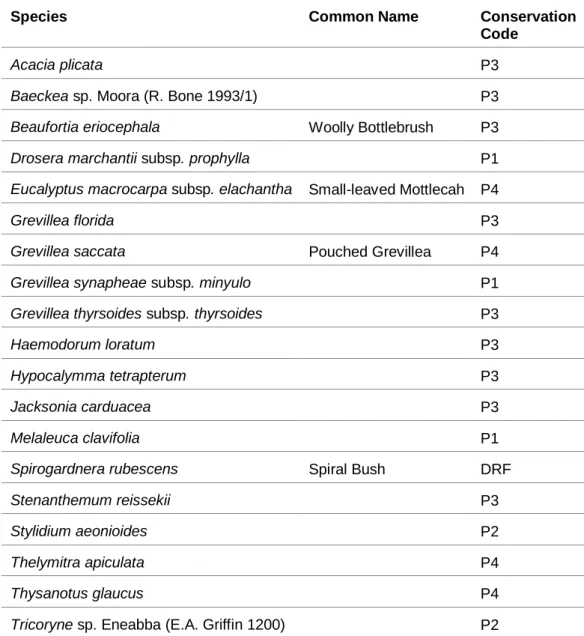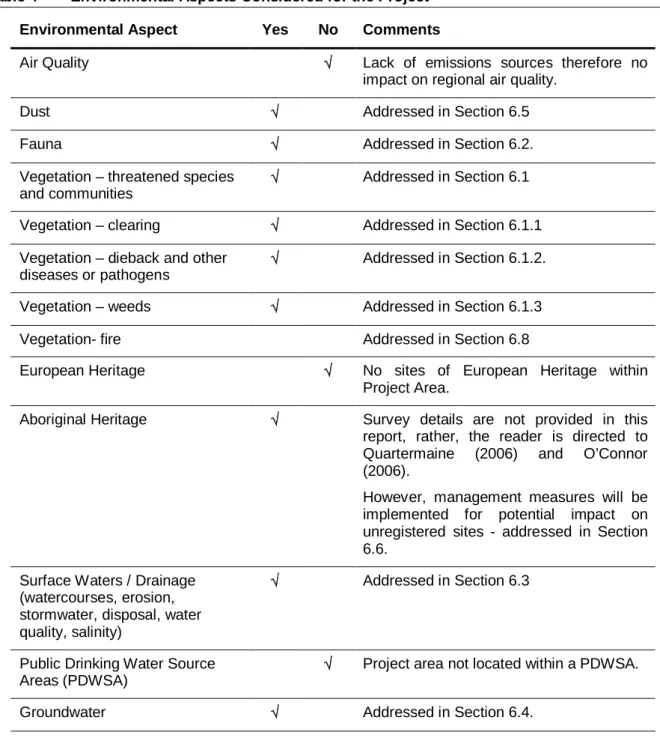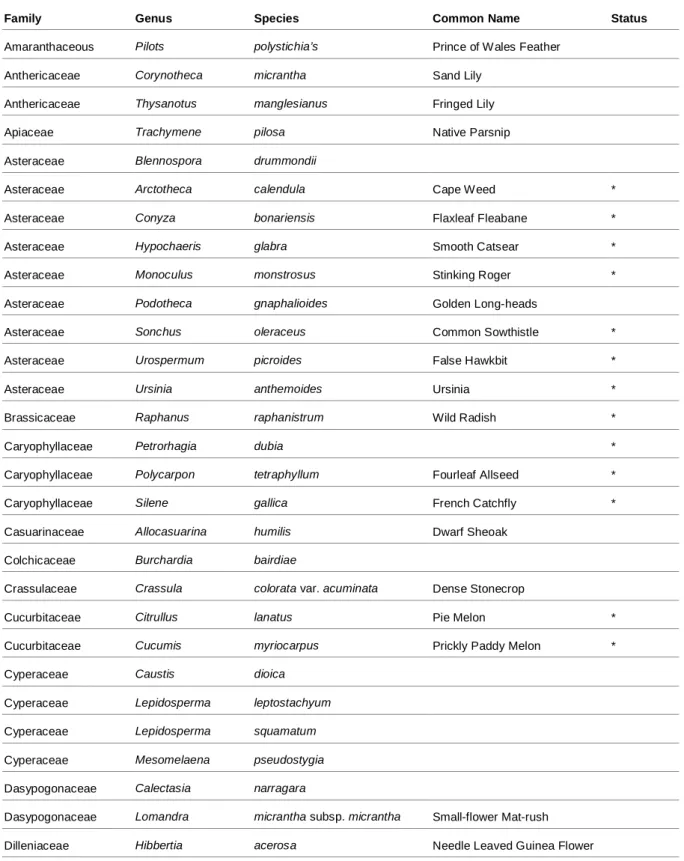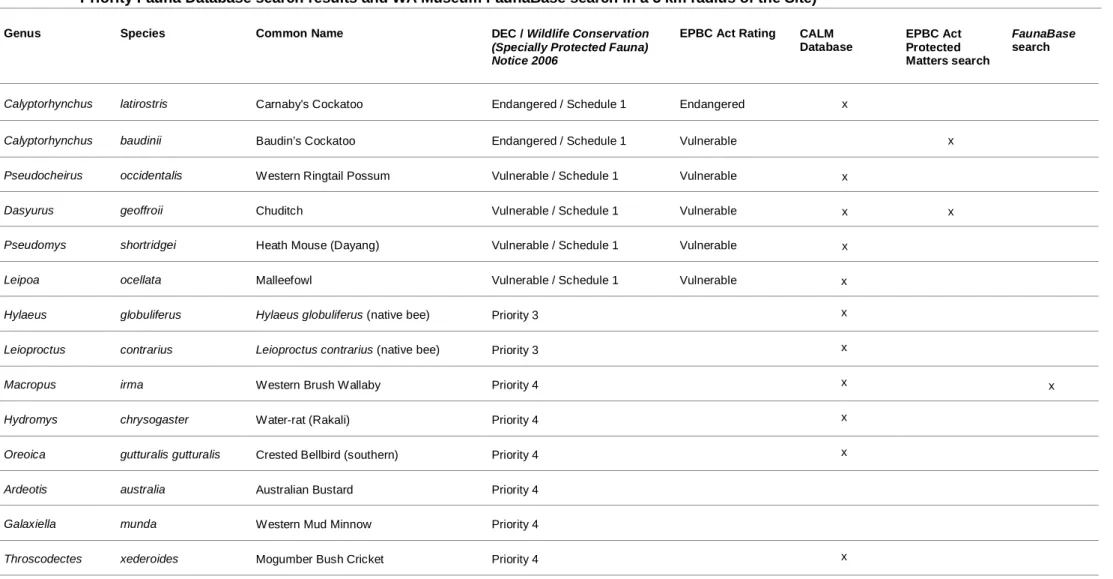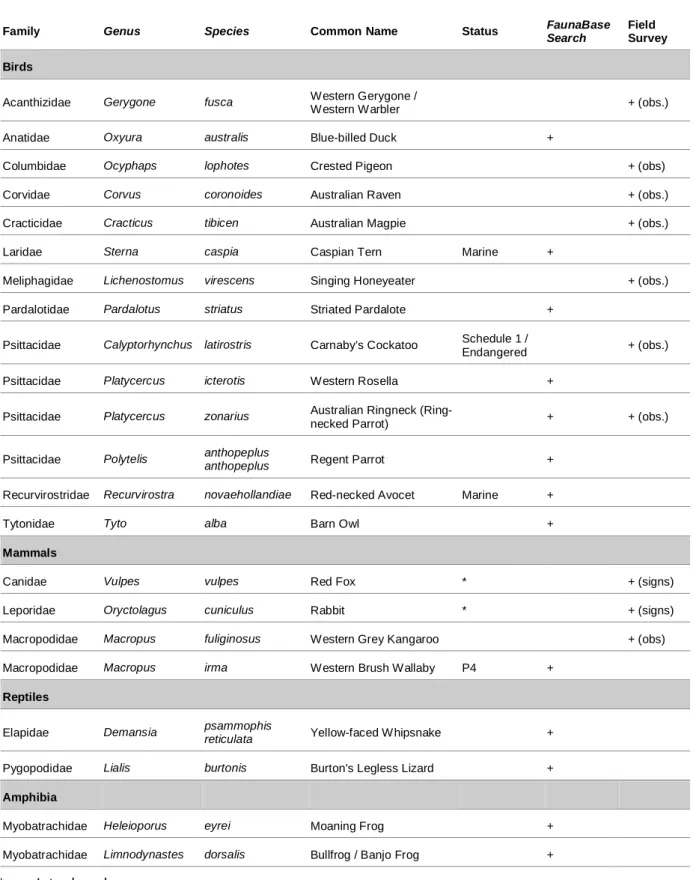When the outcome of the PEIA indicates that the proposed cleanup "may be inconsistent or seriously inconsistent with one or more of the cleanup principles," the Major Roads WA must undertake an Environmental Impact Assessment (EIA) (DEC, 2005 - Main Roads WA Permit Purpose CPS 818/1, Condition 7d). Based on susceptible plant health patterns there was no indication of dieback (Phytophthora cinnamomi) occurring within the site. GHD Pty Ltd (GHD) was commissioned by Main Roads WA to prepare an Environmental Impact Assessment and Environmental Management Plan (EIA and EMP) for a proposed road improvement of sections of the Brand Freeway.
Where the outcome of the PEIA indicates that the proposed clearance "may be inconsistent or seriously inconsistent with one or more of the clearance principles", Main Roads WA must conduct an EIA (DEC, 2005). An assessment of the site's vegetation type and condition and a review of the significance of the vegetation communities on the site. An assessment of the potential presence of any plant pests and diseases on the site.
An inventory and review of vertebrate fauna species in the study area, especially protected fauna species. The site is located approximately 18 km north of the Gingin Turnpike, intersecting with Douglas Road.
Need for the Proposal
Proposal Schedule
Existing Environment
- Climate
- Geology and Soils
- Acid Sulphate Soils
- Rivers and Wetlands
- Groundwater
- Reserve and Conservation Areas
- Contaminated Sites
- Flora and Vegetation
- Background
- Field Survey Methods
- Vegetation Description
- Vegetation Condition
- Significance of Vegetation
- Threatened Ecological Communities
- Environmentally Sensitive Areas
- Flora Species
- Significant Flora Species
- Weeds
- Plant Pests and Diseases
- Fauna
- Field Survey Methods
- Fauna Species
- Significant Fauna Species
- Introduced Species
- Habitat Value
- Habitat Linkages
Scattered trees (Corymbia calophylla) and grass trees (Xanthorrhoea preissii) occur in the highlands of the area. In the northern part of the area, the vegetation of the road reserve is very degraded with a considerable invasion of weeds. We examined this database to determine the extent of vegetation remaining in the study area (Table 4).
A search of DEC's TEC database indicated that there are no TECs in the vicinity of the site. A search of the rare flora databases of the DEC and the Western Australian Herbarium was requested for the Site. However, a number of significant species were recorded in the general region of the Site (Table 9, Appendix B).
During the field survey, signs of use of the area by foxes, rabbits and kangaroos were recorded. Vegetation in the northern part of the area was generally more degraded and the habitat value of this area would be low.

Social Environment
Surrounding Land Use
Aboriginal Heritage
European Heritage
Environmental Aspects
This is not expected to be affected by the Project, but management measures have been addressed in Section 6.3. The project is not expected to require deep excavation, it is considered unlikely that acid sulphate soils will be encountered during the project. Use of Hazardous Substances √ No large quantities may be stored on site, but management measures are addressed in Section 6.9.
Environmental Impacts and Management
- Flora and Vegetation
- Assessment Against the “Ten Clearing Principles”
- Disease Management
- Weed Management
- Fauna
- Drainage
- Groundwater
- Dust
- Aboriginal Heritage
- Public Safety
- Fire Management
- Hydrocarbon and Chemical Storage
- Waste Management
Native vegetation should not be cleared if the clearing of the vegetation is likely to affect the environment. However, based on patterns of susceptible plant deaths a few miles south of the site, it is likely that dieback is present in the area. Habitat Assessment The Site contains plant species that are feed species for Carnaby's Cockatoo and this species may use the Site for foraging.
There is some suitable breeding habitat for Carnaby's Cockatoo in the general region, but the site does not contain suitable breeding trees for this species. Habitat Assessment The site is located at the very northern extent of the Baudin's Cockatoo range and the likelihood of this species occurring in the area is very low. Habitat Assessment The area occurs in the historical range of this species, but its range has been significantly reduced and it is now very unlikely to occur in the area.
Habitat assessment This species is known from Moore River National Park, which is close to the study area. There are dated records (latest from 1989) of this species from Moore River National Park and Namming Nature Reserve, to the north and east of the area. Habitat assessment This species also requires large patches of vegetation to support its populations and is unlikely to occur in the area.
Habitat assessment There are no permanent waterways within the site and the water vole would be very unlikely to occur in this area. Habitat assessment The distribution of this species is greatly reduced and is unlikely to occur in the general area. There are no waterways within the site and this species would not occur in the study area.
Habitat assessment This species has a limited distribution east of the Brand Highway and the probability of its occurrence at the site is low. Habitat assessment Australian bustards can occur in the general area and may be occasional visitors to the site, but they tend to prefer more open habitats. Habitat assessment The locality lies north of the known northern range of this species, and although historically recorded in this area (the record is from subfossil material), it is now highly unlikely to occur at the site.
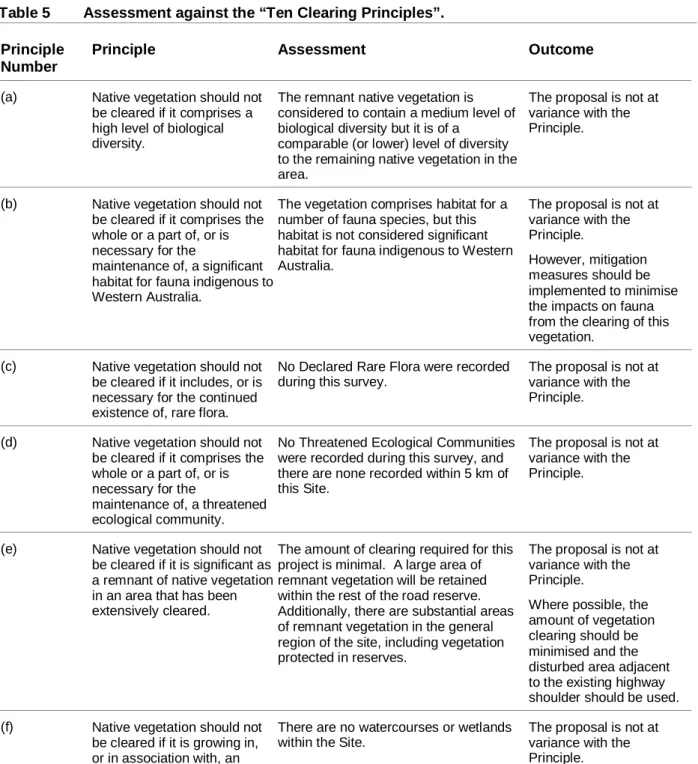
Environmental Management Plan
Environmental Monitoring and Compliance
- Environmental Management and Quality Plan
Consultation
Conclusions
A number of important species have been recorded in the general area, but the main species likely to use the area is the Carnaby's Cockatoo, which could use the area for foraging. The extent of logging required for this project would not significantly affect the habitat of this species and no significant impacts on other significant animal species are expected from the project. The site contains vegetation that is in very good condition and would have a high value as a habitat for fauna.
However, the amount of clearing required for this project is small and most of the vegetation in the road reserve will be preserved. Impacts on the remaining vegetation and animal species in the area can be managed with appropriate mitigation measures as described in the EMP. It has been assessed that the amount and type of clearing required for this project does not materially deviate from any of the 'Ten Principles of Clearing'.
SLK56.00 SLK
Vegetation Community Descriptions
Low Banksia Woodland
Scrub – Heath
Road Reserve
The proposed clearing is not considered to be inconsistent with any of the ten clearing principles. Dieback appears to be present several kilometers south of the site, based on patterns of susceptible plant mortality. Fauna Due to minimal clearance, it is unlikely to have a significant impact on the long-term survival of any threatened fauna that may occur within the Project area.
The contractor undertaking the construction will be aware of environmental concerns and their obligations, to ensure minimal environmental impact. The staff involved in the Project will be aware of environmental concerns and their obligations, to ensure minimal environmental impact. Limit the movement of machines and other vehicles to the boundaries of the areas to be cleared.
The project will not cause fires and the project will not increase the risk to the surrounding area. All machines will be closed during periods of extreme fire danger as advised by DEC or Main Roads WA or Shire of Gingin. Smoking on site will be controlled and all cigarettes will be disposed of in an appropriate receptacle.
All glass (and other waste) will be collected and removed from the premises on a daily basis. Construction Contractor Construction 9.3 The work site shall be left in a safe condition at the end of each working day. Dust lifting will be kept to a minimum, minimizing inconvenience to road users and risks of impact on surrounding vegetation and public safety.
The TMP will be submitted to the Construction Manager for approval within twenty eight days of award of contract or within ten days of award of site possession or prior to commencement of work, whichever is earlier. Any deviations will be corrected at the first opportunity, while the deviation and any improvement actions will be described in the relevant building inspector's documentation. Ms Lauritsen stated that it will be necessary for Main Roads WA to apply for a clearance permit as the previous dispensation that applied to this activity has now expired, however advised GHD of Main Roads WA's new purpose clearance permit.
These surveys should target endangered flora species and ecological communities that are known or likely to occur near the site. Mr. Connell provided details of the gas pipeline infrastructure crossing near the project area.
